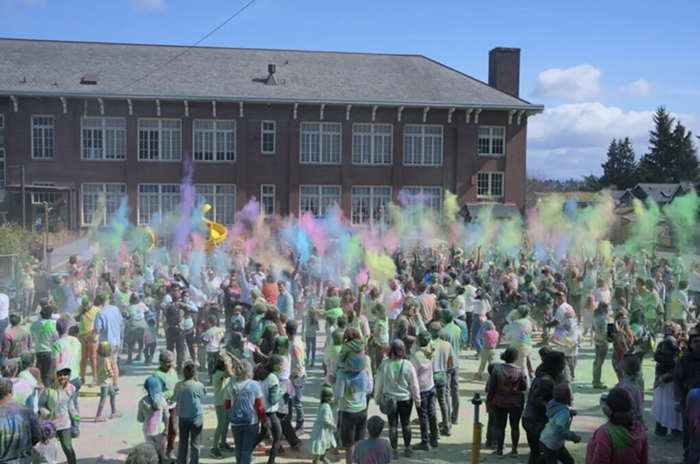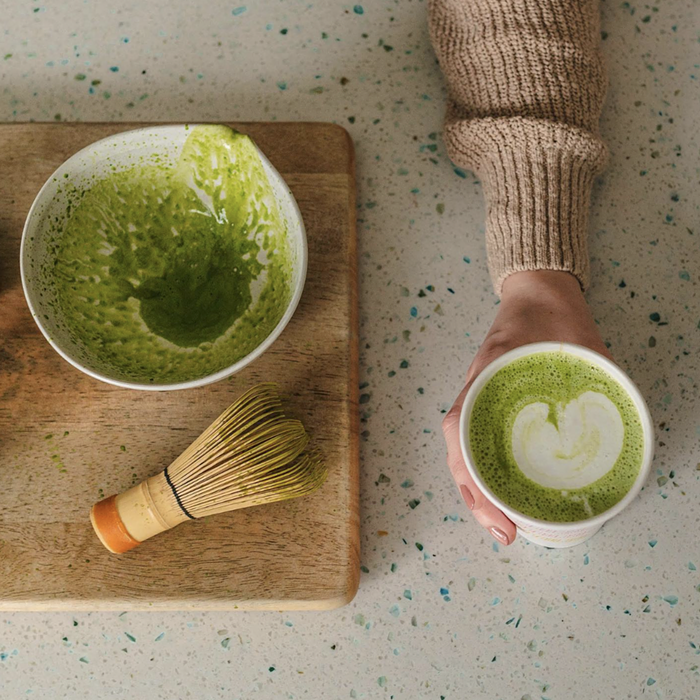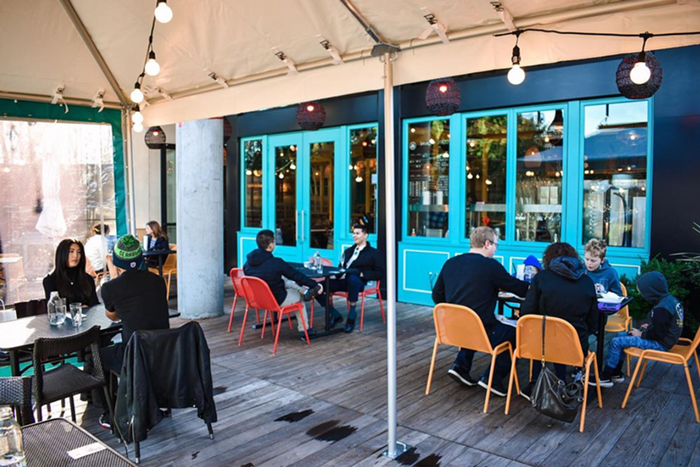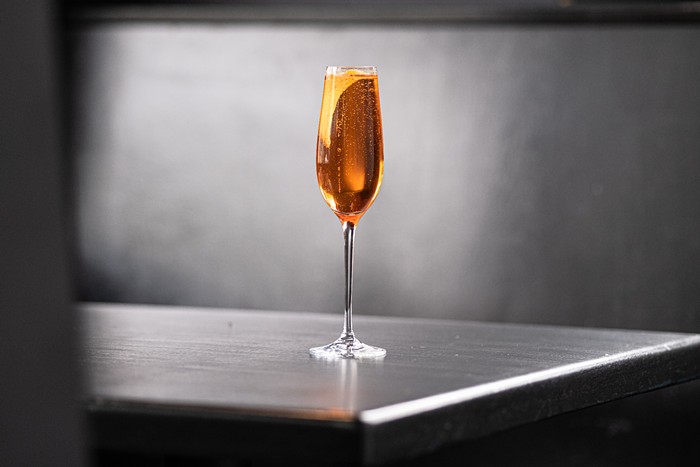The cafe in the Frye Art Museum is one of Olson Kundig Architects' local masterpieces. The glass, the tranquil interaction between inside and outside, the natural light, the pond, the sunny (or rainy) courtyard, the cold concrete walls, the solid ramp, the rhythm of the pillars, the sky-reflecting towers in the distance, the green bushes here, the brown reeds there, the formal arrangement of the brown and silver furniture—what all of this adds up to is a cafe that feels not so much like an actual place in the world of things and animals, but an idea frozen in the lucid mind of an architect. Indeed, this is one of the best places in town for a modernist like myself to drink white wine. Red wine does not work with this architecture because it blocks out, rather than contributes to, the ambience of natural light. What you want to feel and see is the light of the city, the light of the cafe's spaces, and the light in the orb of the wine. (The cafe sells three white wines: a sauvignon blanc, Nobilo, from New Zealand; an organic chardonnay, Bonterra, from California; and another chardonnay, Georges Duboeuf Macon-Villages, from Burgundy, France.)
The cafe's food, however, is not exactly in harmony with the architecture. It's not that it's bad per se, but that it tastes like the kind of food you'd expect to be served at an upscale conference. It's healthy and hearty, but it is not memorable. While eating the soup of the day (on my day, it was carrot soup), or the curry chicken salad sandwich, or the small Greek salad, one can't help but feel that they should be wearing a name tag and discussing with members of one's profession this or that aspect of an expo we are all attending.
But the reason I wrote this column was not to discuss the food at the cafe, or the space of the cafe, but a very small part of the museum's current exhibit, BUSTER SIMPSON // SURVEYOR, which is huge and excellent. This small part is a wire-mesh model that looks very much like the towering monument Vladimir Tatlin envisioned in 1919 for the Third International in Saint Petersburg. And why am I bringing this model to your attention? Because if you stare at it long enough, as I did after three glasses of wine, you begin to see something, an echo, that may or may have not been intended: A section of Simpson's Seattle George Monument sculpture in Freeway Park is the top of Tatlin's Tower turned upside down. To make some meaning of out this realization would require a few more drinks.



















